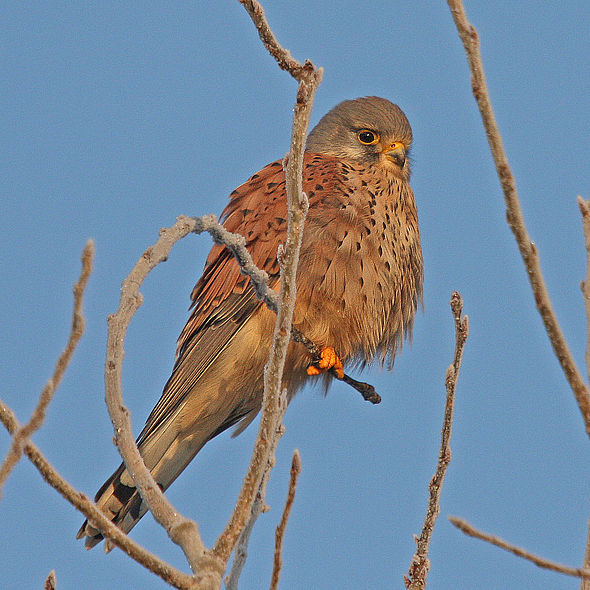Falco tinnunculus
Interesting facts: The kestral prefers to brood in elevated breeding spots. These can be church towers, but also bridge abutments, masts or disused magpie and crows nests in tree tops. Kestrals remain together as a pair for life. The stationary flight when searching for prey in unmistakable. The bird remains 10 to 20 m high up in the air with rapid wing beats. If it spies prey, it dives down and grabs it. Its main food is mice, but in town areas often song birds. As in other birds of prey, indigestible food remains are regurgitated as pellets.
Characteristics: Males (Image 1) with blue-grey head and tail, broad darker tail band, upperside red-brown, underside like the female (Image 2) with clear patches, the tail of the female has considerably more bands; toes yellow with black claws; strong beak with the falcon’s tooth and hooked tip; often hovers on the spot when looking for food
Body length: Longer than 30 cm (longer than a blackbird)

